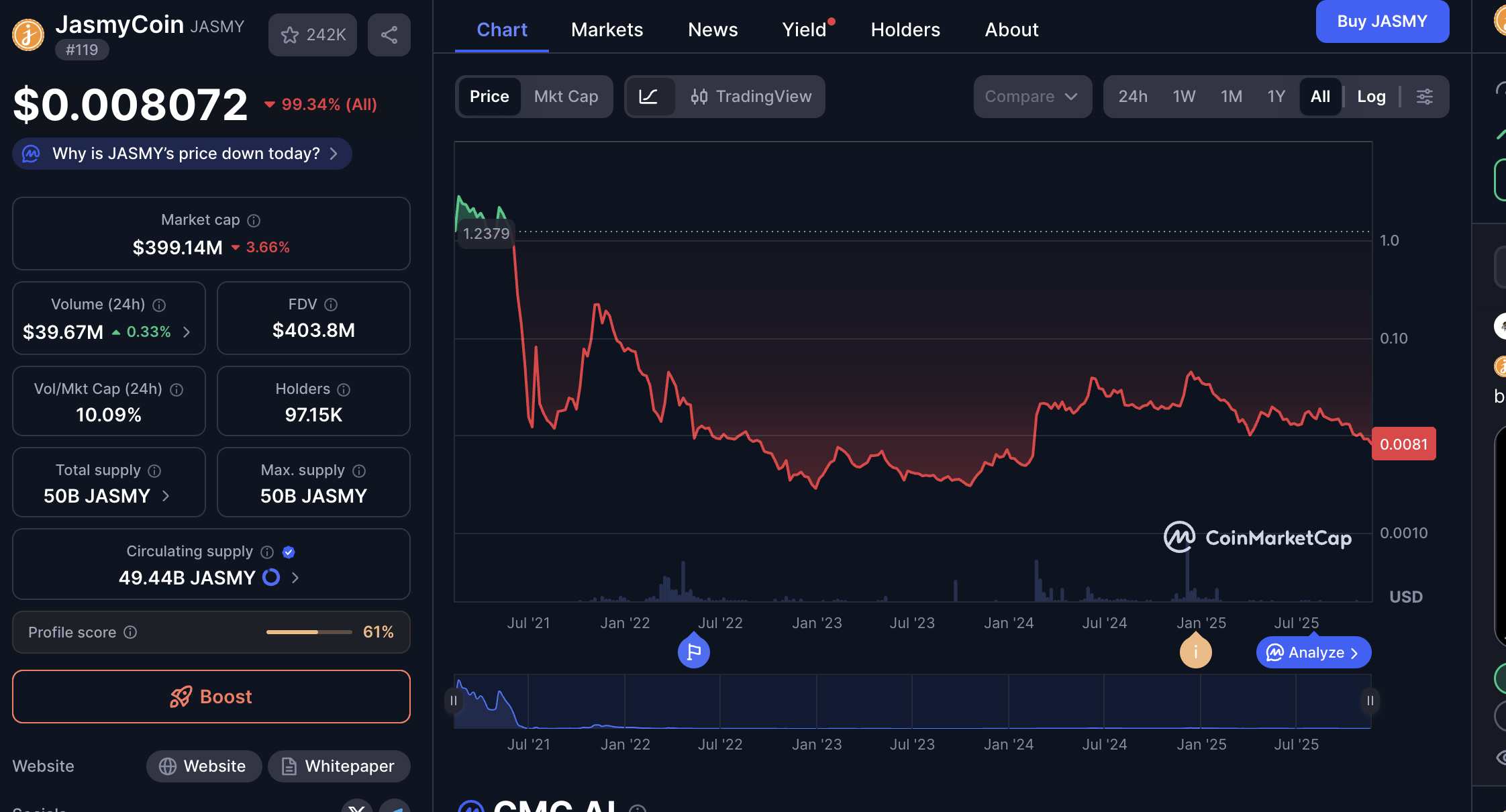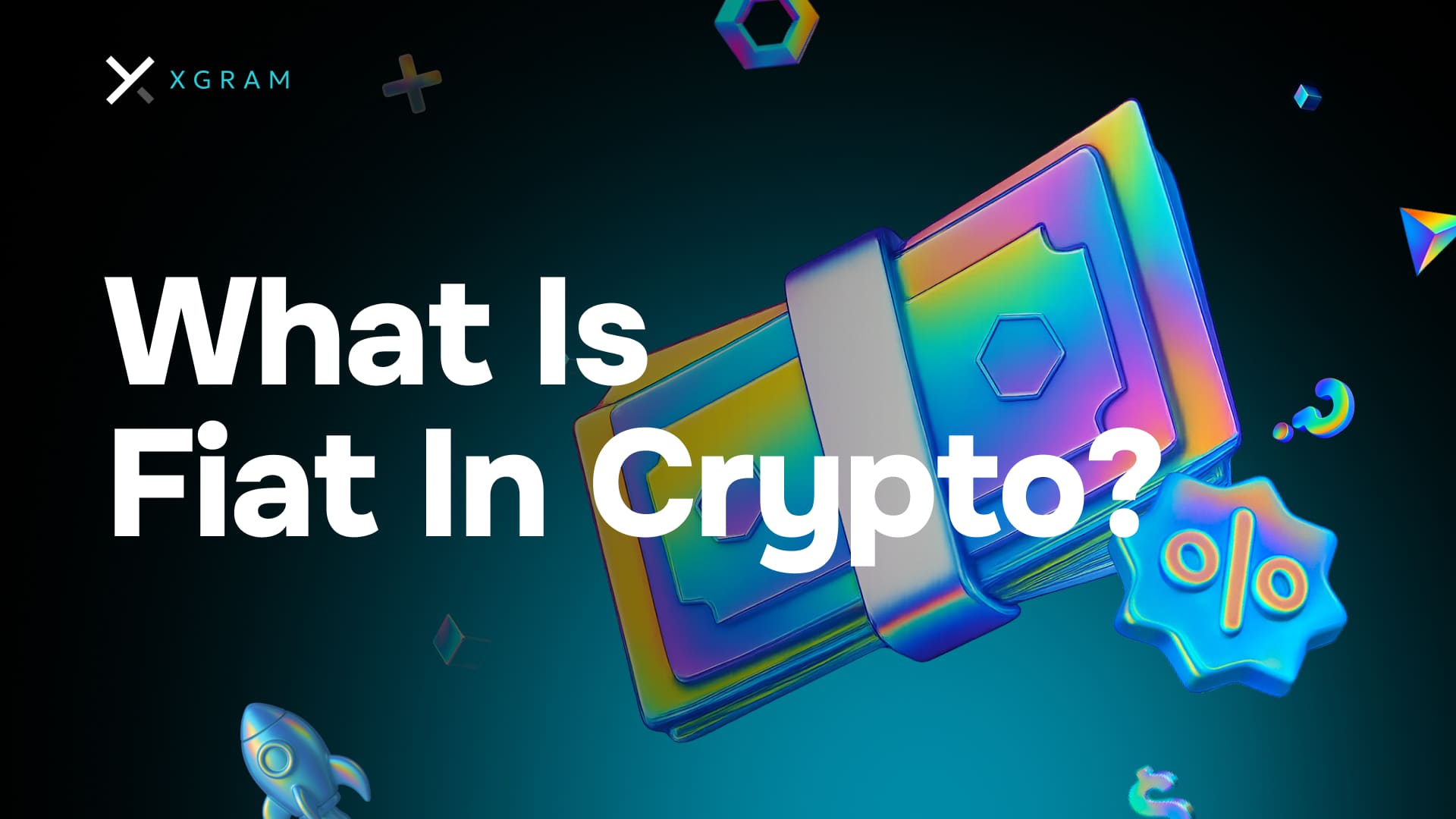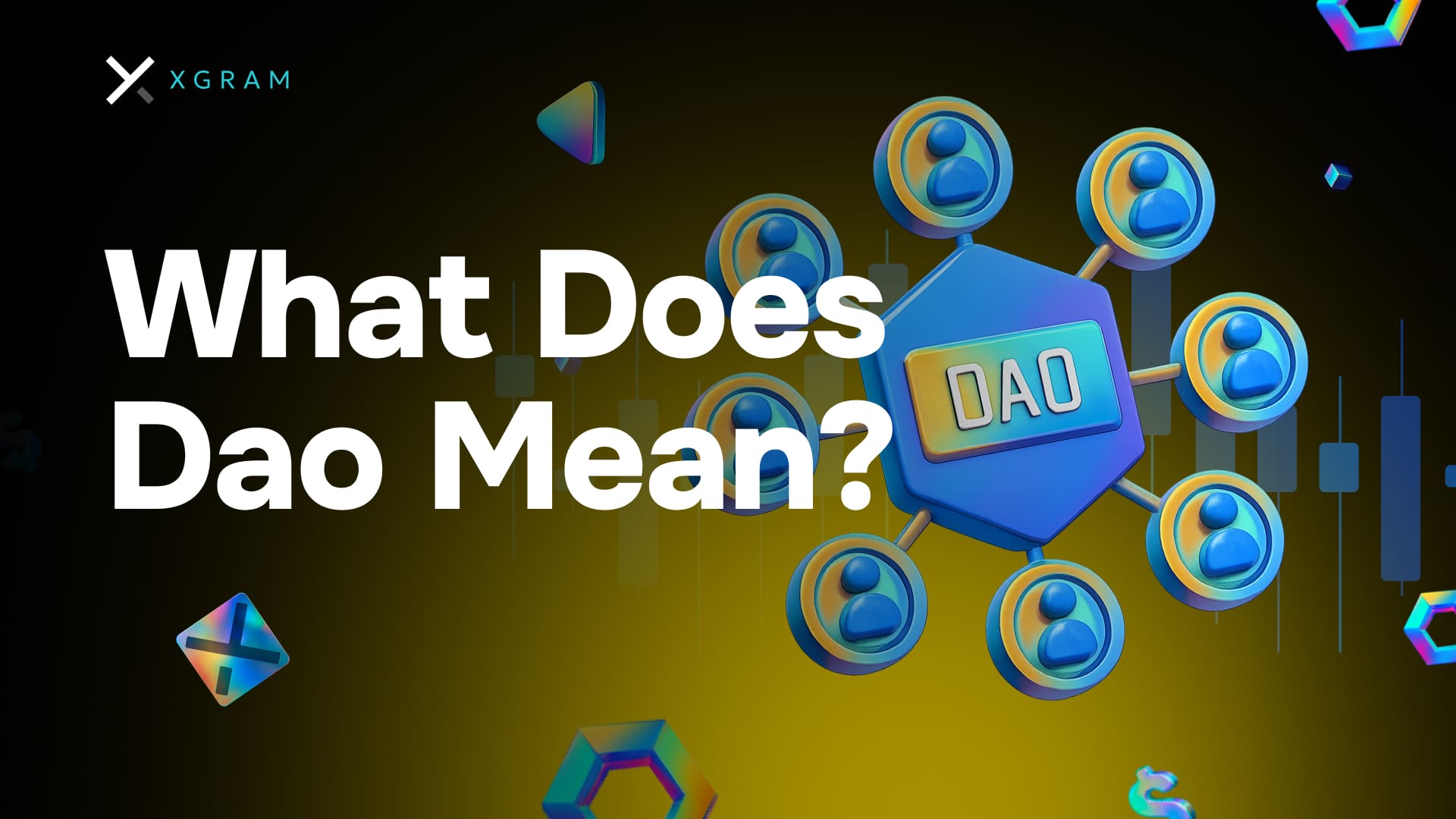TL;DR (in 3–4 sentences): Jasmy coin is a cryptocurrency that aims to let users take control of their personal data. It’s built on the Ethereum network and powers a platform that focuses on secure data sharing. You can buy and store it like most ERC-20 tokens, and it’s backed by a Japanese tech company called Jasmy Corporation. Though it’s still a newer project, plenty of investors are watching it to see if it delivers on its promise of data democratization.
Explore the background of Jasmy coin

To really grasp Jasmy coin, you first need to understand how it fits within blockchain technology. Blockchain doesn’t just store digital money. It can also help you secure, exchange, and manage data in an environment that aims to be tamper-proof. Traders, developers, and everyday users have come to rely on blockchain tokens for more than just purchasing power because a token can also represent access, governance rights, or even personal data. Jasmy coin is an example of a token designed to shift how people handle data, especially in the Internet-of-Things (IoT) space.
The idea behind blockchain and IoT
You might already know that IoT devices—everything from smart fitness trackers to internet-connected refrigerators—generate massive data. Usually, that data is collected and managed by centralized entities. In contrast, blockchain-based projects want to redistribute the control and ownership of that data back to you, the user. Jasmy coin emerged with that in mind, aiming to create a platform where data is not just hoarded by corporations but instead placed under your control.
Where Jasmy comes from

Jasmy Corporation is based in Japan and was started by former Sony executives, which adds a layer of credibility among some investors. The team behind it believes that user data should be protected and that personal information should not be endlessly used or sold by giant tech firms without your knowledge. By attaching data ownership to a transferable digital asset like Jasmy coin, the project hopes to pioneer a new standard for IoT devices and data rights.
Understand key features
In crypto, it’s crucial to separate hype from tangible features. This section lays out what sets Jasmy coin apart from many other altcoins on the market.
An ERC-20 token
Jasmy coin is built on Ethereum, which means it follows the ERC-20 standard. For you, this translates to easier integration with popular wallets, relatively straightforward storage, and simpler trading on many exchanges. This also means you can manage Jasmy with tools that you might already use for other ERC-20 tokens if you’ve ventured into crypto before.
Focus on secure data exchange
Jasmy coin isn’t just about peddling another token for speculation. Its design centers around IoT data. Let’s say you have a smart device uploading information to the cloud. With a Jasmy-based platform, that data can remain encrypted and under your control. You could choose who can access your info—and even potentially monetize it. This is an emerging concept, so while the platform’s full utility might still be developing, the potential use cases do intrigue people who are worried about big tech data practices.
A push toward data democracy
Another big selling point is the idea of data democracy. In many platforms today, you trade your personal info for free services. Jasmy wants to flip this model. If you hold Jasmy coin, you hypothetically get more say in how your data is shared or used. This empowerment angle resonates with certain privacy-conscious users. While it’s still early days, the big vision is to give you the final word on where your data goes and who gets to see it.
Check potential use cases
At first glance, you might assume that Jasmy coin is just a random token for speculators. However, to see why people focus on it, let’s explore some possible use cases.
Secure personal IoT data
Imagine you have a wearable device that tracks your daily steps, your sleep patterns, or your heart rate. Instead of automatically sending that data to a company’s central server, the Jasmy platform can allow you to hold onto that data on a blockchain. You then give explicit permission to share it with third parties—perhaps a medical research institution—if and only if you want. Because the data is encrypted, only users with the correct permissions can view it. That is the big promise: restoring agency to you, rather than blindly trusting a corporation.
Enterprise data management
Beyond personal IoT devices, Jasmy coin might also support enterprise-level solutions. Data security is a massive concern in industries like healthcare, finance, and manufacturing. If businesses see a chance to manage internal networks of sensors or data-collection devices in a more secure, user-controlled way, they may choose a platform like Jasmy. This could drive adoption of the coin, since enterprise-level solutions often need a robust token ecosystem to operate efficiently.
Rewards for sharing data
You might not realize it now, but your data has value. If you choose to share details about your device usage or preferences with a company doing market research, you could be rewarded with Jasmy coin. This transforms the old dynamic where big companies take user data for profit. Jasmy’s concept is that when you voluntarily allow companies to access your data, you can get a slice of the benefits. While this model is still emerging, it’s another reason first-time crypto users find the project intriguing.
Buy and store Jasmy
One of the first questions new investors ask is how to get hold of Jasmy coin and keep it safe. Although the steps resemble any other token purchase, you should still follow some best practices.
Step 1: Pick an exchange
Because Jasmy coin is an ERC-20 token, you can find it on a handful of crypto exchanges that list smaller-cap altcoins. Some of the major centralized exchanges do carry it. After verifying the exchange supports the Jasmy/USDT or Jasmy/BTC trading pair (or a local currency pair if available), you can deposit funds to purchase Jasmy. As always, look for an exchange with good reviews, enough liquidity, and a user interface you can navigate easily.
Step 2: Complete verification
If the exchange requires identity checks, you’ll need to go through a Know Your Customer (KYC) process. You typically upload verification documents or ID. This step can take a bit of time, but it helps keep the exchange in compliance with regulations. Make sure you follow each instruction carefully, because errors can delay your ability to buy tokens.
Step 3: Purchase Jasmy coin
After your funds are deposited, you’re ready to trade. Decide how much Jasmy you want to acquire based on your comfort with risk. When you’re about to confirm your trade, double-check you’re buying Jasmy and not a similarly spelled token—some lesser-known tokens can confuse beginners. Once confirmed, you’ll see Jasmy coin in your exchange wallet.
Step 4: Transfer to your own wallet
Storing your tokens in an exchange wallet isn’t always the safest move. You might want to transfer Jasmy coin into a personal wallet that supports ERC-20 tokens. It could be a hardware wallet for maximum security or a software wallet you manage directly. Remember to keep your seed phrase and private keys in a secure offline place. That way, you stay in control of your coins.
Trade with xgram exchange
A lesser-known but increasingly interesting option for cross-chain trades is Xgram. If you’re looking for a way to swap various cryptocurrencies without connecting a personal wallet, Xgram might catch your eye. Here are five pointers about why you might consider it:
- Xgram simplifies cross-chain and regular crypto exchanges in a single interface.
- You don’t need to connect an external wallet, which can reduce security concerns tied to external wallet approvals.
- Fees tend to be lower than on some major platforms, helping you keep more of your coins.
- The interface focuses on user experience, so if you’re new to crypto, the learning curve isn’t too steep.
- Xgram aims to streamline chain-to-chain transfers, letting you move Jasmy or other tokens across networks without the usual complexity or confusion.
This type of flexibility might be especially useful if you’re juggling tokens on multiple blockchains. Maybe one day you want to exchange some ERC-20 tokens, and the next day you need something on the Binance Smart Chain. xgram’s cross-chain support can simplify that. By not requiring you to link a personal wallet, xgram also cuts out the risk of approving suspicious transactions. Make sure you still do your due diligence, though. While convenience and cost savings are real benefits, you ought to look at user reviews, check for any reported security issues, and stay updated on the platform’s reliability.
Consider challenges and risks
Like all cryptocurrencies, Jasmy coin comes with its share of uncertainties. If you’re a new investor, you want to weigh the positives against the negatives before you commit any funds.
Volatility in altcoin markets
Altcoins—basically any coin that isn’t Bitcoin—can see wild price swings. One day, Jasmy coin might look stable. The next, it could double in price or drop by half. This volatility can be stressful, especially if you’re new. Don’t overlook the possibility that news, partnerships, or even market rumors might trigger sudden changes. Setting clear limits on how much capital you’re willing to risk helps you avoid making panicked decisions based on short-term price fluctuations.
Unproven adoption and real-world traction
Some supporters see Jasmy coin as a game-changer for data privacy. Others point out that the platform’s adoption in real enterprise environments is still in early phases. If Jasmy’s corporate partnerships don’t pan out or its data-democracy model doesn’t gain traction fast enough, demand for the coin can stay low. Always do your independent research, looking at the project’s roadmap and community updates to see if they follow through on their promises.
Regulatory landscape
Cryptocurrency regulations can influence whether a project like Jasmy coin thrives in a given region. Some countries may crack down on altcoins, while others might support them. The regulatory environment shifts constantly, and that uncertainty can affect the coin’s price and your ability to trade it. Keep an eye on legal news in your region, especially if you plan on investing significant amounts.
Security and scams
As with any crypto project, impostors or scam tokens often appear to take advantage of new investors. Always verify you’re trading the correct token contract address. Also, watch out for phishing attempts that might direct you to fake websites. Sticking to reputable exchanges, using official project links, and storing your tokens in a wallet you control are your best defenses against scams.
Answer your top questions
Below are five common questions about Jasmy coin. If you’re completely new, this Q&A might help you decide whether Jasmy coin aligns with your interests.
What blockchain does Jasmy coin run on?
Jasmy coin follows the ERC-20 standard on the Ethereum blockchain. This design makes it easy for you to store the token in wallets that support Ethereum assets and to swap it on many popular decentralized or centralized exchanges.Is Jasmy coin mainly about IoT devices?
Yes, IoT (Internet of Things) data sharing and security are central to Jasmy’s mission. The project aspires to create a system where personal or enterprise IoT data can be kept private, with you choosing whether to share or monetize it.Do I need a specialized wallet for Jasmy coin?
Not necessarily. You can use any wallet that supports ERC-20 tokens, such as MetaMask or a hardware wallet like Ledger. Just make sure you accurately add the token contract address when you’re setting it up, if it’s not already included by default.Is Jasmy coin a good investment?
That depends on your individual research, risk tolerance, and interest in data-privacy-focused projects. Like many altcoins, the price of Jasmy coin can be volatile and the project is relatively new. Before putting any money in, evaluate whether you believe in its long-term value.Can I earn passive income with Jasmy coin?
While some tokens let you stake to earn rewards, Jasmy coin’s ecosystem is mainly geared toward data privacy and secure data ownership. An official staking program may exist in some wallets or on certain exchanges, but it’s not as widely advertised as staking solutions for other coins. Verify the legitimacy of any such program before participating.
Review final takeaways
Cryptocurrencies can be overwhelming when you first dive in, but understanding them can also be empowering. If you’ve wondered what is Jasmy coin, here’s the bottom line:
- It’s an ERC-20 token on Ethereum, so you can store and trade it using standard Ethereum-based tools.
- Its vision focuses on data privacy, where everyday users control the flow of information generated from IoT devices.
- Early adoption is still forming, so keep an eye on corporate partnerships, enterprise interest, and real-world traction.
- You can buy it on various exchanges and consider a personal wallet for safekeeping.
- Platforms like xgram might offer cross-chain solutions with lower fees, especially if you’re juggling multiple types of tokens.
If you’re new to the crypto space, always pace yourself and do your own research. New coins can be exciting, but they also come with risks that are not suitable for everyone. The most important thing is to stay informed, keep your goals realistic, and remember that no coin is a guaranteed ticket to profits. By focusing on genuine utility—like data democratization—Jasmy coin can be part of a bigger movement to reshape how personal information is monetized. It’s up to you to decide if it fits your outlook on crypto and data rights.
также русский, испанский и португальский и франц., и турецкий




